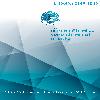Elit ve Elit Olmayan Futbol Oyuncularının Karar Verme Performanslarının Karar Verme Hızı ve Verilen Kararın Doğruluğu Açısından Karşılaştırılması
Bu çalışmanın amacı, elit ve elit olmayan futbolcuların karar verme performanslarının arasındaki farklılığı saptamaya yöneliktir. Bu konu ile ilgili literatürün taranması ve altı deneyimli futbol antrenörleriyle yapılan görüşmeler neticesinde, futbol oyunundaki 10 hücum pozisyonu oluşturuldu. Bu pozisyonların fotoğrafları slayt olarak çekildi. Bu slaytlar, slayt makinasının yardımıyla ekrana yansıtıldığı anda dijital kronometre, otomatik olarak çalışmaya başladı ve bu görüntüler 5 sn. süreyle deneğe gösterildi. Denekler cevaplarını, ayağında top olan oyuncu için mümkün olduğunca hızlı ve doğru bir şekilde, şut, pas, dribbling, çalım ve orta olarak sese duyarlı mikrofona söyledikleri anda dijital kronometreyi durdurdular. Kararın doğruluk ve hızı bağımlı değişkenlerdi. Değerlendirmede doğru cevaplar için 1 puan, yanlış cevaplar için 0 puan verildi.Deneklerin (N=40) karar verme performansları, hem dinlenme hem de bisiklet ergometresinin efor esnasında test edildi. Bu çalışmaya yaşları 19 ve 29 yaş arasında olan 20 erkek profesyonel sporcu ve 20 erkek amatör sporcu katıldı.Araştırmanın istatiksel analizleri için Mann Whitney U ve Student T testleri kullanıldı. Bu çalışmanın geçerlilik ve güvenirlilik testleri, orijinal çalışmayı yapan Mc. Morris , T ve Grayton, J tarafından kendi çalışmalarında yapılmıştır.Araştırma sonunda, elit ve elit olmayan futbolcuların kararların hızı arasında istatiksel açıdan anlamlı bir ilişki bulunmamıştır(p>0.05). Fakat eforlu testte (eforsuz testte göre) her iki grubun karar hızlarında bir iyileşme tespit edilmiştir.Bunun yanında her iki grubun karar doğrulukları arasında anlamlı bir ilişkiye rastlanmamıştır.(p>0.05) Ayrıca her iki grubun eforsuz test karar doğruluklarının, eforlu teste göre daha yüksek olduğu bulunmuştur.
Anahtar Kelimeler:
Sporcu, Öncelleme, Algılama, Karar Verme, Sportif Başarı, Futbol
COMPARISON OF THE ELITE AND NON-ELITE SOCCER PLAYERS IN TERMS OF ACCURACY AND SPEED OF DECISION MAKING PERFORMANCE
The purpose of this study was to evaluate the difference between the decision making performances of elite and non-elite soccer players. Following a review of that subject’s literature and correspondence with six experienced Football Association coaches, 10 soccer decision making problems, that were considered to be typical of attacking situations, were identified, The photographs of these positions were taken as slides. When the slides were projected on to a screen using a slide projector, Digital Timer started automatically working. Slides were shown for five seconds. Subjects were instructed to make a decision as accurately but also as quickly as possible. The answer was made into a microphone, the sound of the subject’s voice stopped the digital timer. Accuracy and speed of decisions were the dependent variables. For accuracy one point was given for a correct answer and none if the answer was wrong. Speed of decision was measured by digital timer. Subjects (N=40) were tested at rest and while cycling on a cycle ergometer at 70 % of their maximum power output. Twenty male professional soccer players and twenty male amateur soccer players were participated and their aged between 19 to 29 years old in this study. Mann-Whitney U and Student T tests were used the evaluate differences in data obtained. The validity and reliability of this study were made by Mc. Morris and Grayton in their study. A significant relationship was no found in terms of the speed of decisions of the elite and non-elite soccer players. (p>0.05) But an improvement at the speed of decision of both groups has been shown in the cycle ergometer test. In addition, there was no a relationship between the accuracy of decisions of the elite and non-elite soccer (p>0.05) During the resting, it has been shown that the accuracy of decisions of both groups were better than the other test’s results.
Keywords:
Athletic, anticipation, Perception, Decision Making, Athletic Performance, Soccer,
- Yayın Aralığı: Yılda 2 Sayı
- Başlangıç: 1995
- Yayıncı: Manisa Celal Bayar Üniversitesi, Spor Bilimleri Fakültesi
